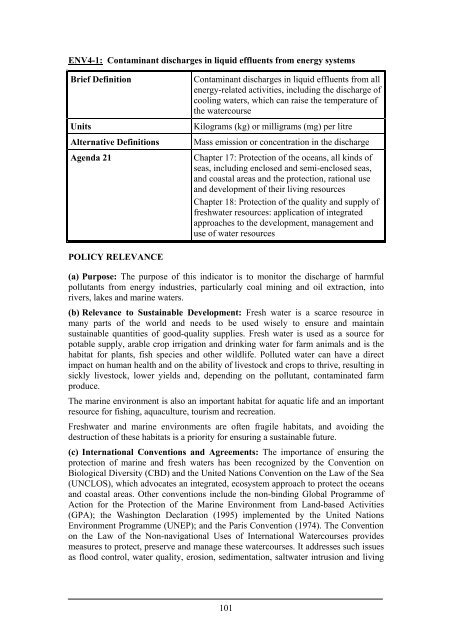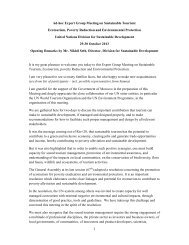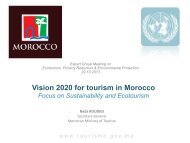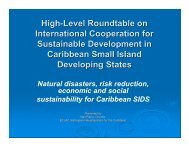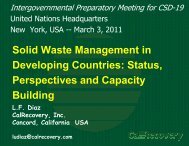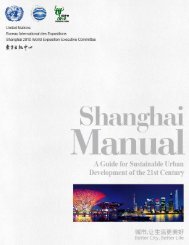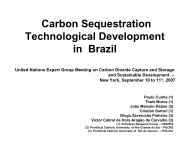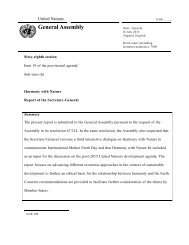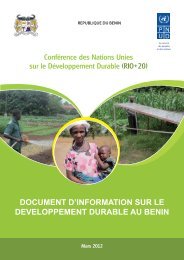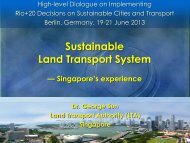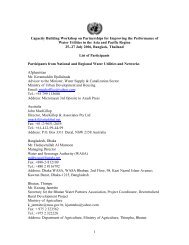Energy Indicators for Sustainable Development ... - IAEA Publications
Energy Indicators for Sustainable Development ... - IAEA Publications
Energy Indicators for Sustainable Development ... - IAEA Publications
You also want an ePaper? Increase the reach of your titles
YUMPU automatically turns print PDFs into web optimized ePapers that Google loves.
ENV4-1: Contaminant discharges in liquid effluents from energy systemsBrief DefinitionUnitsAlternative DefinitionsAgenda 21Contaminant discharges in liquid effluents from allenergy-related activities, including the discharge ofcooling waters, which can raise the temperature ofthe watercourseKilograms (kg) or milligrams (mg) per litreMass emission or concentration in the dischargeChapter 17: Protection of the oceans, all kinds ofseas, including enclosed and semi-enclosed seas,and coastal areas and the protection, rational useand development of their living resourcesChapter 18: Protection of the quality and supply offreshwater resources: application of integratedapproaches to the development, management anduse of water resourcesPOLICY RELEVANCE(a) Purpose: The purpose of this indicator is to monitor the discharge of harmfulpollutants from energy industries, particularly coal mining and oil extraction, intorivers, lakes and marine waters.(b) Relevance to <strong>Sustainable</strong> <strong>Development</strong>: Fresh water is a scarce resource inmany parts of the world and needs to be used wisely to ensure and maintainsustainable quantities of good-quality supplies. Fresh water is used as a source <strong>for</strong>potable supply, arable crop irrigation and drinking water <strong>for</strong> farm animals and is thehabitat <strong>for</strong> plants, fish species and other wildlife. Polluted water can have a directimpact on human health and on the ability of livestock and crops to thrive, resulting insickly livestock, lower yields and, depending on the pollutant, contaminated farmproduce.The marine environment is also an important habitat <strong>for</strong> aquatic life and an importantresource <strong>for</strong> fishing, aquaculture, tourism and recreation.Freshwater and marine environments are often fragile habitats, and avoiding thedestruction of these habitats is a priority <strong>for</strong> ensuring a sustainable future.(c) International Conventions and Agreements: The importance of ensuring theprotection of marine and fresh waters has been recognized by the Convention onBiological Diversity (CBD) and the United Nations Convention on the Law of the Sea(UNCLOS), which advocates an integrated, ecosystem approach to protect the oceansand coastal areas. Other conventions include the non-binding Global Programme ofAction <strong>for</strong> the Protection of the Marine Environment from Land-based Activities(GPA); the Washington Declaration (1995) implemented by the United NationsEnvironment Programme (UNEP); and the Paris Convention (1974). The Conventionon the Law of the Non-navigational Uses of International Watercourses providesmeasures to protect, preserve and manage these watercourses. It addresses such issuesas flood control, water quality, erosion, sedimentation, saltwater intrusion and living101


